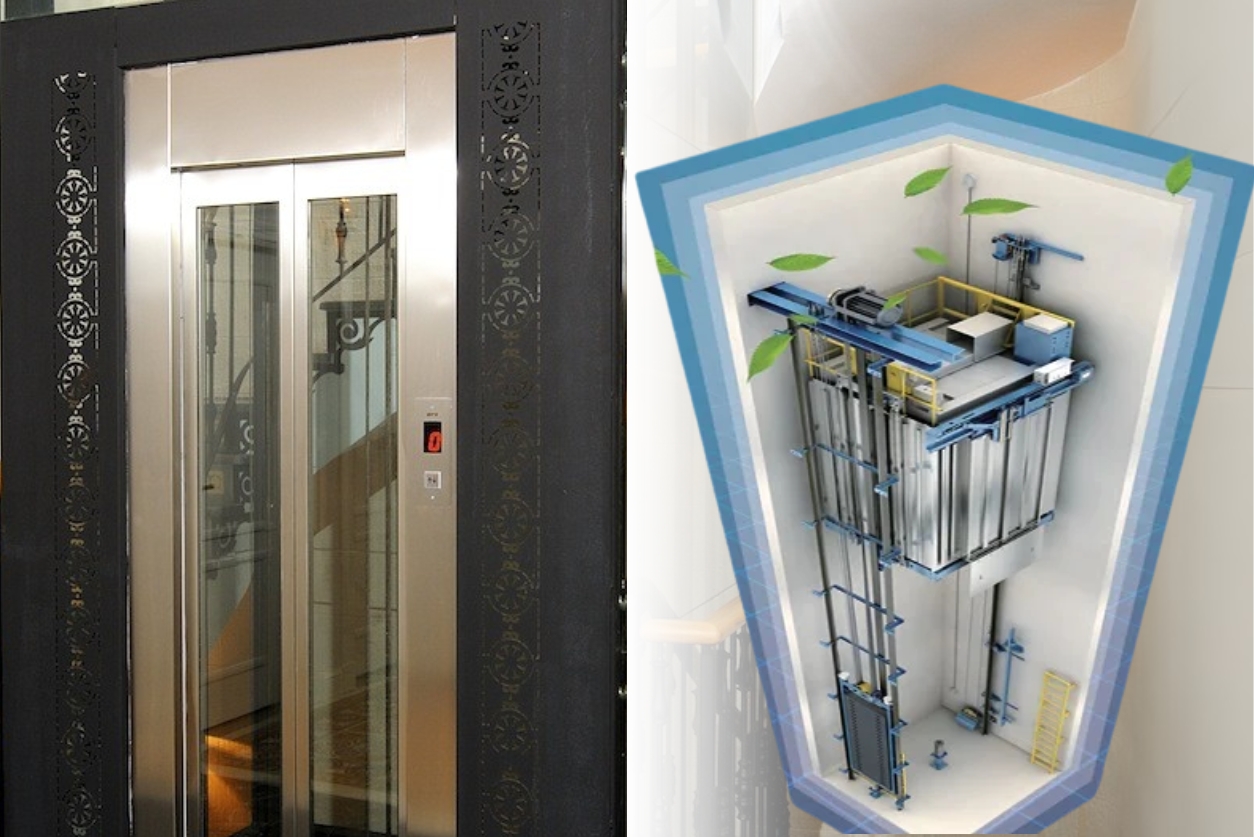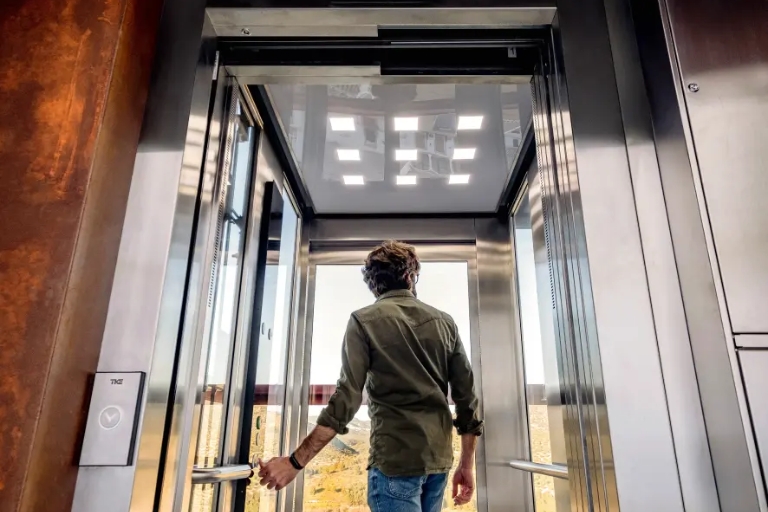An MRL elevator (Machine Room-Less) is one of the best elevator systems, offering convenience to users while ensuring optimal space utilization.
We refer to MRL elevators as automatic because they function without much manual assistance. They are controlled automatically by sensors, buttons, and programming.
The placement of motor in an MRL elevator system sets it apart from the traditional elevator system. The motor is placed at the top of the elevator shaft, or sometimes in the shaft pit at the bottom, depending on the elevator design.
For commercial and domestic lifts and elevator solutions, MRL elevators are the best.
Types of MRL Elevators
1. Traction MRL Elevators
Traction MRL elevators use cables and pulleys, known as sheave, to lift the elevator car. Here, the motor is located at the top of the elevator shaft which drives the sheave, and the cables pull the elevator car up and down the shaft. These elevators can be further divided into two categories, gearless and geared traction systems.
Traction MRL elevators in homes are the best option if you are looking for a space-saving design and an energy-efficient solution.
Gearless Traction MRL Elevators
Gearless Traction MRL Elevators work differently from geared ones because they do not use gears. Instead, the motor is directly connected to the sheave (the big wheel that moves the elevator). This setup makes the elevator more efficient and smoother when it moves.
Because there are no gears, it also runs smoother and consumes less energy. This is the reason gearless traction elevators are the best elevator system for high-rise buildings.
Advantages:
- Smooth movement
- Energy-efficient
- High speed
- Minimal maintenance
Geared Traction MRL Elevators
The geared traction MRL elevator functions a bit differently from gearless elevators. In these elevators, the motor has gears that help move the elevator by turning a wheel called a sheave.
The geared traction MRL elevators are less expensive to install and require minimal maintenance. But they do not ensure smooth movement nor be energy efficient as the gearless systems. So, you might hear a bit more noise when the elevator is running, and it might use a little more energy, but they still get the job done well, especially in buildings that do not need high speed elevators.
Advantages:
- Lower upfront cost
- Easy to use
2. Hydraulic MRL Elevators
The function mechanism of Hydraulic MRL elevator is different from the traction elevators. It operates using a hydraulic piston to operate. The vertical movements happen when the motor pumps hydraulic fluid into the piston. The hydraulic MRL elevators are simple to use and are compact as they do not require cables.
The motor and pump are typically located in the pit of the elevator shaft or are within the shaft itself, which eliminates the need for a separate machine room.
Hydraulic elevators are often used in low-rise buildings, but MRL hydraulic elevators for homes are also the best option to go with as they save space and are smooth.
Advantages:
- Simple design
- Cost-effective
- Smooth movement
- Space-saving
Traction vs. Hydraulic MRL Elevators
| Feature | Traction MRL | Hydraulic MRL |
| Drive System | Cables and pulley (gearless or geared) | Hydraulic piston |
| Ideal Building Height | Mid to high-rise (up to 20+ stories) | Low-rise (up to 5-7 stories) |
| Speed | Faster, higher speeds possible | Slower speeds, ideal for low-rise |
| Energy Efficiency | More energy-efficient, especially gearless | Less energy-efficient than traction |
| Smoothness and Ride Quality | Very smooth and quiet, especially gearless | Steady, but may have slower starts/ends |
| Cost | More expensive initially | Lower initial cost |
| Maintenance | Lower maintenance (especially gearless) | Simpler to maintain |







